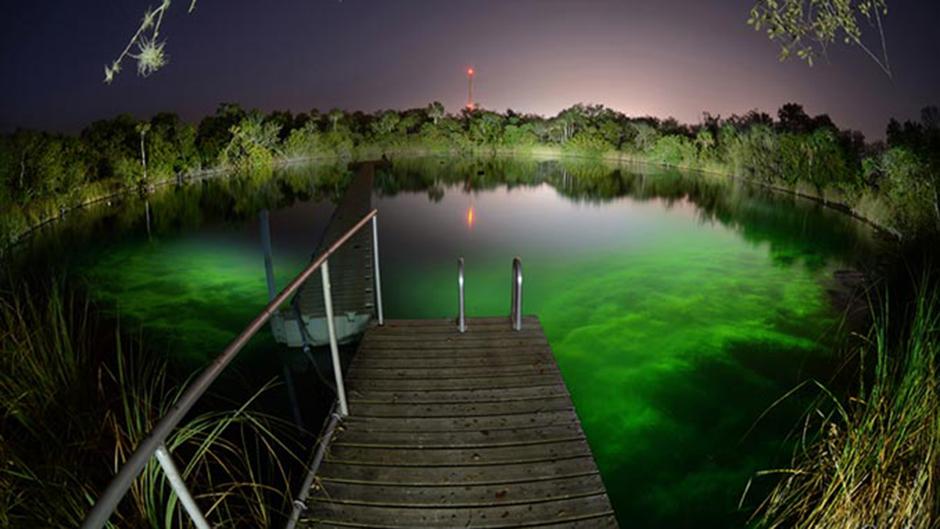Since the 1950s, archeologists have discovered ancient materials from the bottom of Little Salt Spring, a sinkhole in southern Sarasota County along Florida’s west coast. These artifacts, from wood to textiles, date back to the Late Paleoindian and Early Archaic stages of Florida’s prehistory and reveal what life was like for humans more than 10,000 years ago.
“Little Salt Spring is a unique time capsule of perfectly preserved organic materials used by ancient people in their daily lives,” said Traci Ardren, professor of anthropology in the College of Arts and Sciences. “We have an obligation to study and protect this amazing resource from the past and learn more about how humanity adapted to the dramatic climate changes that occurred at the end of the last Ice Age.”
During early prehistoric times, Little Salt Spring was an oasis attracting seasonal hunters and gatherers. The spring contains some of the oldest cultural remains found in the U.S., such as a sharpened wooden stake that, close to 12,000 years old, was found thrust through an extinct giant tortoise shell.
This month, the University of Miami is hosting a full-day public symposium on the significance of Little Salt Spring. Entitled Ancient Explorers: Little Salt Spring and the Peopling of the Americas, the conference will include a keynote speaker, scholarly presentations, a discussion panel aimed to explore new research and findings from the spring, and a pop-up artifact exhibit showcasing 25 years of archeological finds recovered at the spring, from an antler calendar to lithic spear points and shell ornaments.
“The wooden, bone, and antler tools and ornaments from Little Salt Spring tell an amazingly detailed story of what life was like for the very first humans who settled in Florida,” said Ardren. “They reveal an intimate knowledge of the landscape and resources native to our peninsula, and help us appreciate the ingenuity and creativity of these early inhabitants.”
In addition to the keynote speaker, Michael R. Waters, director of the Center for the Study of First Americans at Texas A & M University, who will speak on “Forging a New Understanding of the Late Pleistocene Peopling of the Americas,” the symposium will welcome Lee Newsom, professor of anthropology at Flagler College; Jason O’Donoughue, an archeologist with the Bureau of Archaeological Research, Division of Historical Resources; Jessi Halligan, professor of anthropology at Florida State University; and Andrew Hemmings with the Aucilla Research Institute. The afternoon panel discussion will feature speakers from the University of Miami Rosenstiel School of Marine and Atmospheric Science and the Department of Anthropology; the Florida Public Archaeology Network; the Seminole Tribe of Florida; and the Warm Mineral Springs/Little Salt Spring Archaeology Society.
"As study into the unique archaeology and environmental settings at Little Salt Spring is renewed, researchers will also find an eager community within North Port, and the greater Sarasota County area, who are ready to learn more about and take part in the continued discovery of all things Little Salt Spring," said Jeffrey T. Moates, director of the West Central Regional Center of the Florida Public Archaeology Network.
Ancient Explorers: Little Salt Spring and the Peopling of the Americas is open to the public and co-sponsored by the University of Miami, the Florida Public Archaeology Network, and HistoryMiami Museum. The full-day symposium will be held on February 24, from 9 a.m. to 5 p.m., at the University of Miami’s Storer Auditorium, 5250 University Drive, Coral Gables, FL 33146.
For more information and to register for the event, visit http://www.as.miami.edu/anthropology/news--events/ancient-explorers/. There is a $25 registration fee that includes lunch. The fee is waived for University of Miami students.

